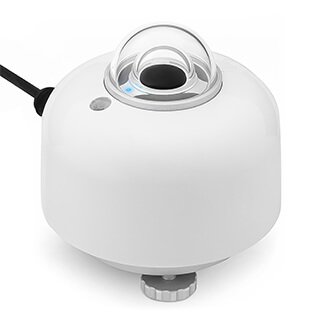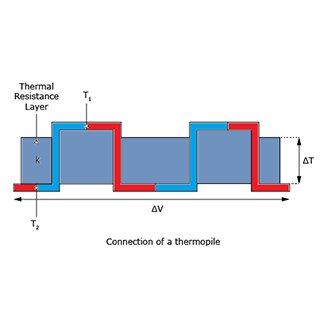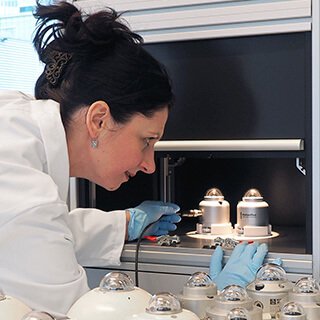Top 10 Frequently Asked Questions about solar radiation
This article answers the most frequently asked questions concerning solar radiation and solar radiation sensors, from basic definitions to practical applications and measurement techniques. Whether you are a student, engineer, or simply curious about solar radiation, these FAQs offer a good introduction to the field of solar radiation measurement.

1. What is solar radiation?
Solar radiation refers to the electromagnetic energy emitted by the sun expressed in watts per square meter (W/m2). It primarily consists of three categories of wavelengths:
- 49 % Infrared radiation: Wavelengths between 0.7 - 1000 µm
- 43 % Visible light: Wavelengths between 0.4 – 0.7 µm
- 7 % Ultraviolet light: Wavelengths between 0.1 - 0.4 µm
This radiation is a product of the nuclear fusion reactions in the sun. It travels from the sun through space and reaches earth, where we measure it as solar radiation. For a more detailed explanation of solar radiation, please read this article in our Library: Solar radiation measurement.
2. What are the different types of solar radiation?
Solar radiation can be categorised into three main types (see Figure 2):
- Direct Normal Irradiance (DNI): The radiation that reaches the sensor in a straight line from the sun.
- Diffuse Horizontal Irradiance (DHI): The radiation that is scattered by particles in the atmosphere, reaching the sensor indirectly.
Reflected solar radiation: Generally referred to as reflected irradiance or albedo. The radiation that is reflected off surfaces before it reaches the sensor. These three types can be useful for various applications. For a more detailed explanation of the types of solar radiation, please read the article in our Library: Measuring sunlight: what instrument to use.
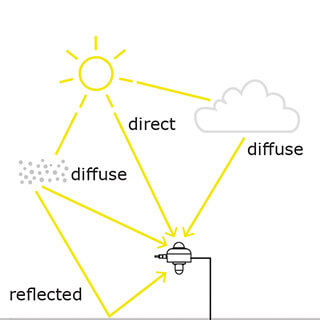
3. Why is it important to measure solar radiation?
Measuring solar radiation is important across various industries. In the renewable energy industry, it helps optimise solar power systems, during site assessment and to predict energy output. In climate studies, it helps us understand the earth’s energy flows, as solar radiation drives weather patterns, temperature changes and more. In agriculture, it helps optimise crop yield and improve greenhouse management.
There are many more uses for solar radiation measurements. If you are interested in reading more about solar radiation sensor applications, please read this article in our Library: Top 5 applications involving pyranometers.
4. Where do you get the most solar radiation?
The amount of solar radiation a location receives depends on several factors.
- Atmospheric conditions: Clouds and other particles in the air, such as industrial pollution, reflect and absorb solar radiation, reducing the amount that hits the surface.
- Latitude: The angle at which sunlight strikes the earth affects its intensity. Locations near the equator receive more direct radiation year-round.
- Altitude: The atmosphere absorbs and reflects solar radiation. Since the atmosphere thins at higher altitudes, more radiation will be received at higher altitudes.
- Albedo: The reflectivity of a surface affects how much solar radiation is reflected or absorbed. Surfaces with high albedo, like snow or ice, reflect more radiation, contributing to the total measured radiation. Darker surfaces, such as forests, absorb more solar energy.
5. What is a solar radiation sensor?
A solar radiation sensor is an instrument specifically designed to measure the intensity of solar radiation reaching a surface. These sensors are primarily used in solar energy monitoring to provide real-time data, which can be compared to the output of the solar panels to evaluate their performance. Examples of solar radiation sensors are: pyranometer, albedometer, pyrheliometer, pyrgeometer and net radiometer.
6. How do solar radiation sensors work?
Solar radiation sensors typically use a thermopile or a silicon photodiode to detect solar radiation. At Hukseflux, we use thermopile technology due to its higher accuracy. A thermopile converts sunlight into a measurable electric current, which is calibrated to determine the intensity of the radiation. For a more detailed explanation on thermopiles, read our article: What is a thermopile?
7. What types of solar radiation sensors are there?
Various types of solar radiation sensors are designed for specific applications. At Hukseflux, we offer five different types of solar radiation sensing systems for different applications:
- Pyranometer: Measures solar radiation on flat surfaces, capturing radiation in W/m2 from a hemispherical view (180°).
- Albedometer: Measures albedo, reflected solar radiation, and global solar radiation, the sum of diffuse and direct solar radiation. An albedometer is composed of two pyranometers; the one facing up measures global solar radiation, while the one facing down measures reflected solar radiation.
- Pyrheliometer: A sensor that measures direct sunlight (DNI), used in outdoor solar power monitoring, solar energy surveys, and scientific meteorological and climate observations.
- Pyrgeometer: Measures longwave radiation. This radiation is primarily emitted by the earth’s surface, atmosphere and clouds. Measuring this radiation creates a clearer image of what part of the total radiation is terrestrial, as opposed to solar.
- Net radiometer: Used in scientific-grade energy balance and surface flux studies. The net radiometer consists of multiple sensors to capture multiple types of radiation, creating a more complete picture of the radiation on earth.
8. How do you calibrate a solar radiation sensor?
In simple terms, calibrating solar radiation sensors is done by comparing the sensor to a reference instrument. Both instruments are exposed to the same conditions in a controlled environment, and their results are carefully compared. The sensor is then adjusted to match the reference instrument.
In reality, calibrating a sensor is more complicated and must follow strict protocol to ensure it meets global standards such as the ISO 9001, IEC-61724-1 and WMO.
Pyranometer calibration ensures that the sensor continues to generate data accurately. To guarantee a high level of accuracy, sensors are provided with a certificate of the global standards that they meet. Some of these standards require periodic calibration.
The best practice is to calibrate a pyranometer at an ISO 17025 accredited laboratory. Hukseflux is ISO 17025 accredited for pyranometer and pyrheliometer calibration. We calibrate solar radiation sensors from the most well-known brands. We work together with our partners to offer our calibration service worldwide.
For more information on calibrating your solar radiation sensors, please read the article in our Library: Pyranometer calibration: everything you need to know.
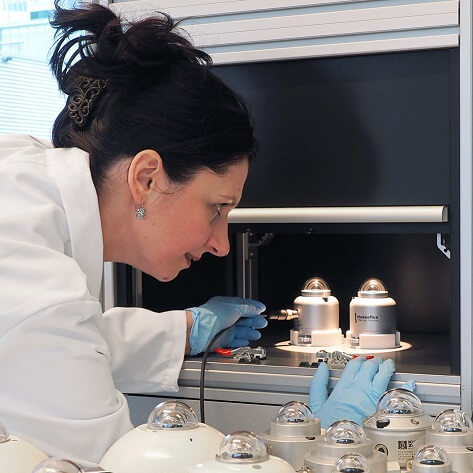
9. When do you have to calibrate your solar radiation sensor?
Calibrating your solar radiation sensor every two years is the minimum requirement for international standards like IEC 61724-1 and WMO.
Some international standards might require more frequent calibration. It also highly depends on the application and the type of sensor. For questions about a specific sensor/application, please contact our support team.
For more information on calibrating your solar radiation sensors, please read: Pyranometer calibration: everything you need to know.
10. What maintenance do solar radiation sensors require?
Basic maintenance involves cleaning the sensor’s dome, checking and adjusting the level, and inspecting the components for physical damage.
The amount of maintenance a solar radiation sensor needs depends heavily on the environment the sensor is operating in. Sensors placed in harsher conditions might need more regular check-ups to ensure proper performance.
If your question and answer were not listed in our FAQ, please contact us. Our technical engineers will reply with an answer as soon as possible.








